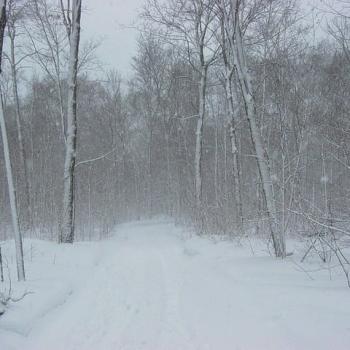One can see the work of many different divine beings in the elemental forces of the world (polytheism), or understand each individual feature of nature to have or be able to have its own inherent spirit (animism); or one can understand all of nature and the universe as having a common and underlying spirit (pantheism), or that such a unifying divine force can be perceived in each thing even if the things themselves do not wholly contain it (panentheism). These are all viable theological positions to take within a modern Pagan context, and they will appeal to different individuals and traditions in diverse ways. Each view has been and will be adopted, understood, and practiced in many ways by modern Pagans and polytheists.
What does not go on in modern Paganism or any historical form of polytheism or animism, though, is the "worship of nature" outside of a perception of a divine force within or behind it. There were simply not enough resources in many of the most ancient animist societies to "worship" nature "for its own sake" outside of propitiating the powers of nature for plentiful food, fair weather, and other such things. To imagine that nature simply as itself (with no theological beliefs attached) should be worshipped for its own sake today is equally not viable or sensible. But to worship with the intent to interact with the gods and spirits of nature, with the goal of assuming one's place within nature and the cosmos, is a common element in religious activity throughout human history, and it remains a goal of many modern Pagans today.
This is why I find the definitions of modern Paganism that emphasize "nature worship" to be problematic. It is not "nature" as understood by science that is actually being worshipped. An oak tree's stomata may appreciate the four minutes you spend singing your chants under it, but a teenager with blasting gangsta rap on a boom box (do people even have those any longer?) would probably have the same effect.
I do maintain, however, that no matter how much we might pray for rain when we're experiencing drought, or for a storm to pass our houses safely when dark clouds gather on the horizon, we may still find ourselves in difficult straits as a result of nature's beautiful ferocity. (Exceptions happen, and miracles do occur; I've heard more than one of these sorts of tale where Shinto shrines are concerned, and have witnessed one personally.) If we do pray and have good relationships with the land through the gods and spirits of it, though, it may be easier to cope with such disasters when they occur.
It's the difference between getting an impersonal recorded phone call notifying you that your grandmother has died and having a friend who is a nurse at the retirement home where she lived calling to console you after giving you the bad news: no matter what, grandma is dead, but having more personal lines of communication makes the entire experience much easier to deal with.
As far as we know, nothing like Tolkien's Ents have been discovered in nature. But, as modern mythic personifications of the "spirit of the trees," I think the Ents can be useful models in envisioning what the gods and spirits of nature can be like. There are nymphs in every waterway; there are spirits of earth in every rock and mountain; there are innumerable totem spirits lurking behind the eyes of every animal we see in the wild and in domestic contexts; and there is even a god or goddess you can glimpse for every sudden breeze that picks up just as you finish your prayers.
Being that this is the case, I still find the phrase "nature-worship" for what is being done in animism, polytheism, panentheism, and pantheism to be inaccurate. The physicality of the universe and of nature is to be respected, preserved, admired, and harmonized with as much as possible. The spirits and gods in nature are deserving of our active worship and devotion. The difference between these things should be understood and appreciated. To define polytheist, animist, pantheist, or panentheist practice and belief as "nature worship" in modern Paganism is, in my view, as inaccurate as calling polytheist beliefs and practices "statue-worship" or "Homeric Hymn worship."





